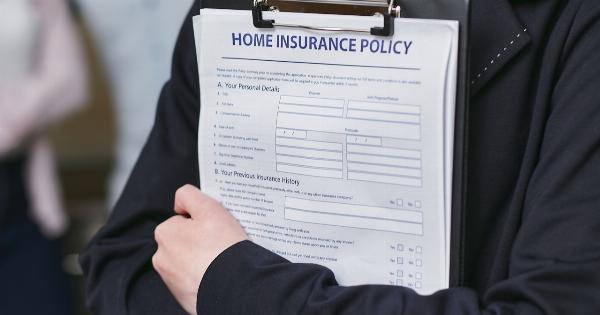Insurance coverage is important for many reasons. It can provide financial protection against unexpected events and help pay for the costs associated with them. However, not all insurance policies are created equal.
Some policies may have more exclusions or limitations than others, which can leave you with less coverage than you thought you had. In this article, we’ll discuss how to maximize your coverage and what to watch out for when purchasing insurance.
1. Understand Your Coverage
The first step in maximizing your coverage is to understand what it covers and what it doesn’t. This means reading through your policy documents carefully and asking questions if you’re unsure about anything.
Here are some important things to look for:.
- What events or situations are covered?
- What exclusions or limitations are in place?
- What is the deductible?
- What is the premium?
- What is the coverage amount?
By understanding these key factors, you can make an informed decision about whether a policy is right for you.
2. Choose the Right Coverage Amount
When choosing insurance coverage, it’s important to choose the right amount. This means taking into account the potential costs of an event or situation you’re insuring against.
For example, if you’re insuring your home, you’ll want to choose a coverage amount that will cover the cost of rebuilding your home if it is completely destroyed.
Choosing a coverage amount that is too low can leave you with out-of-pocket expenses if something happens, while choosing a coverage amount that is too high can result in you overpaying for coverage you don’t need.
3. Consider Additional Coverage Options
In addition to standard insurance coverage, there may be additional coverage options available that can provide extra protection in certain situations.
For example, if you live in an area prone to floods, you may want to consider purchasing flood insurance in addition to your standard homeowners’ insurance policy.
Other options may include extra liability coverage, which can protect you in the event you are sued for damages, or coverage for expensive items such as jewelry or art.
4. Be Aware of Exclusions and Limitations
One of the most important things to watch out for when purchasing insurance is exclusions and limitations. These are situations or events that your policy will not cover or will only cover up to a certain amount.
Examples may include flooding, earthquakes, or acts of terrorism.
It’s important to understand these limitations and exclusions before purchasing a policy so that you can make an informed decision about whether the policy is right for you.
If you live in an area prone to flooding, for example, you may want to choose a policy that includes flood coverage.
5. Shop Around for the Best Deal
When purchasing any type of insurance, it’s important to shop around for the best deal. This means comparing policies from different insurance providers to find one that offers the coverage you need at a price you can afford.
It’s important to remember, however, that the cheapest policy isn’t always the best choice. As we discussed earlier, it’s important to choose a policy that provides adequate coverage for your needs.
6. Review Your Policy Regularly
Finally, it’s important to review your insurance policy regularly to ensure it still meets your needs.
This may involve reviewing your coverage amounts, deductibles, and exclusions, as well as checking to see if there are any additional coverage options that may be available.
In some cases, you may find that your insurance needs have changed and that you need to increase or decrease your coverage accordingly.
For example, if you’ve renovated your home or added expensive jewelry to your collection, you may need to increase your coverage amounts.
Conclusion
Insurance coverage is an important part of protecting yourself financially against unexpected events.
By understanding your coverage, choosing the right coverage amounts, considering additional coverage options, being aware of exclusions and limitations, shopping around for the best deal, and reviewing your policy regularly, you can maximize your coverage and ensure you’re fully protected.






















